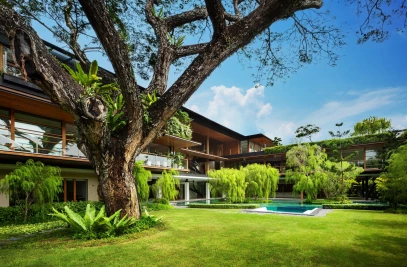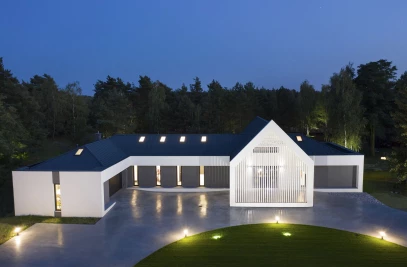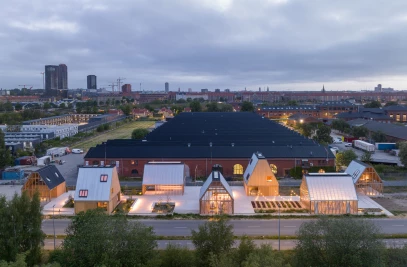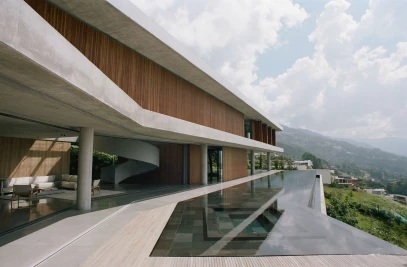On a site formerly occupied by the iconic Pisa cinema in the Barcelona municipality of Cornellà de Llobregat, this freestanding residential building by Peris+Toral Arquitectes comprises 85 social dwellings within five wood-framed floors supported by a reinforced concrete structure at ground floor. The project is the largest wooden-structured residential building in Spain and includes a total of 8,300 m2 of zero KM wood from the forests of the Basque Country.

In addition to the utilisation of wood as the primary construction material, a key design strategy of the multi-family concept was a layout of spaces which, by eliminating both private and communal passages and proposing instead ‘communicating rooms’, optimizes the floor plan.

Organized around a courtyard, the building links a series of intermediate spaces. A portico that opens to the city on the ground floor creates a filtered relationship between public space and connects to a communal courtyard that functions much like a plaza for the inhabitants. And rather than entering the building’s hallways directly from outside, four entry shafts are situated in the four corners of the courtyard, reinforcing the nature of the courtyard as a place where residents come together.

On each typical floorplate, access to individual dwellings comes via private terraces that form a ring of outdoor spaces overlooking the courtyard. The 'communicating rooms', of which there are 114 spaces per floor at 543 in the entire building, remove the need for private and communal passageways, thus maximizing the usage of space.

The 85 dwellings are arranged in four groupings, with a total of 18 units per floor. The groupings are set out around a nucleus to take advantage of cross-ventilation and dual orientation. Inside, an open plan kitchen is situated in the central room and functions as a distributor that eliminates the need for passages. Room sizes are designed to offer flexibility based on the ambiguity of use.

Finally, server spaces are located in the central ring while the remaining rooms (approximately 13 m2) run along the façade. Yet another terrace in the outer ring completes the spatial sequence of spaces interconnected by large openings that are permeable to air, sight, and movement.































